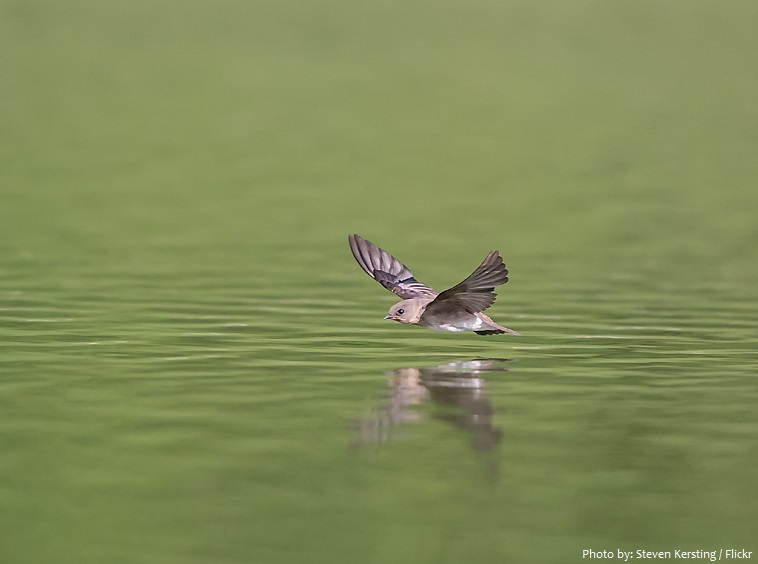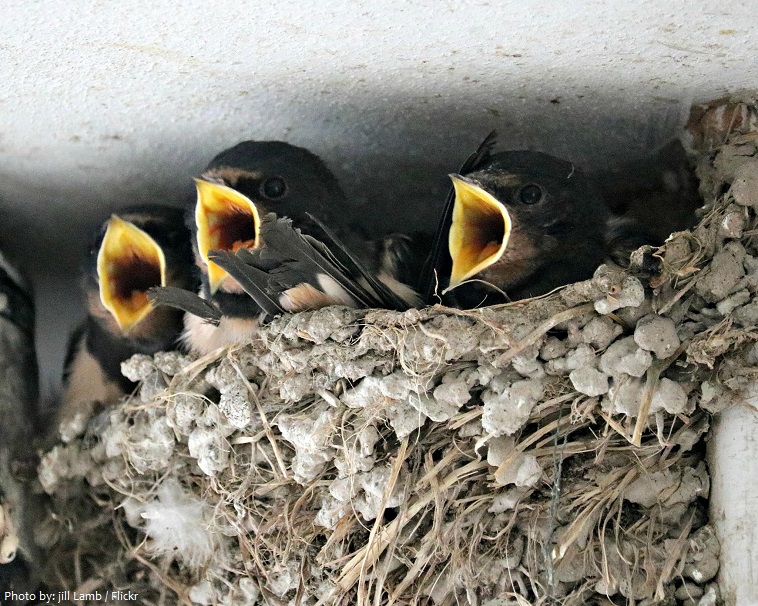The swifts are a family, Apodidae, of highly aerial birds.
There are 19 genera of swifts and a total of 92 species.
Almost worldwide in distribution, swifts are absent only from polar regions, southern Chile and Argentina, New Zealand, and most of Australia.
Swifts are species that require foraging habitat with high numbers of aerial insects.
They are found in virtually any temperate or tropical area where prey can be found. Swift habitat includes desert oasis, Mediterranean scrub, steppe, farm or grassland, urban areas, forest and canyons.
They can be found from sea level to 4000 meters (13,000 feet). Because water is an integral aspect of the breeding biology of many species, swifts are usually found near water.
Swifts have lifespan about 10 to 20 years. The oldest known swift reached 30 years.
Swifts range in size from the pygmy swiftlet (Collocalia troglodytes), which weighs 5.4 g and measures 9 cm (3.5 in) long, to the purple needletail (Hirundapus celebensis), which weighs 184 g (6.5 oz) and measures 25 cm (9.8 in) long.
They have exceptionally long wings and chunky, powerful bodies. Their compact plumage is a dull or glossy gray, brown, or black, sometimes with pale or white markings on the throat, neck, belly, or rump. The head is broad, with a short, wide, slightly curved bill. The tail, although often short, may be long and deeply forked. The feet are tiny and weak; with the aid of sharp claws they are used only to cling to vertical surfaces.
Swifts are very aerial species and spend much of their lives on the wing. Their sickle-shaped wings are well adapted for high-speed flight.
Swifts are among the fastest of birds, and larger species like the white-throated needletail have been reported travelling at up to 169 km/h (105 mph) in level flight.
In a single year the common swift can cover at least 200,000 km (125.000 mi).
All swifts eat insects, ranging from aerial spiders, dragonflies, flies, ants, to aphids, wasps and bees. They drink by flying near the surface of water with an open mouth.
Swifts communicate acoustically and visually. They are highly vocal; males and females have different calls consisting of chips and rattling or buzzy screams. Males perform aerial displays to attract mates and deter intruders. Sometimes males’ wings will produce sound during aerial displays that is caused by vibrating feathers.
The nest of a swift is made of twigs, buds, moss, or feathers and is glued with its sticky saliva to the wall of a cave or the inside of a chimney, rock crack, or hollow tree.
The eggs hatch after 19 to 23 days, and the young leave the nest after a further six to eight weeks. Both parents assist in raising the young.
The swifts of temperate regions are strongly migratory and winter in the tropics. Some species can survive short periods of cold weather by entering torpor, a state similar to hibernation.
The family name, Apodidae, is derived from the Greek ἄπους (ápous), meaning “footless”, a reference to the small, weak legs of these most aerial of birds.
The IUCN lists no swifts as critically endangered, 1 species as endangered (Guam swiftlet Collocalia bartschi, and 5 species as vulnerable.
The hardened saliva nests of the edible-nest swiftlet and the black-nest swiftlet have been used in Chinese cooking for over 400 years, most often as bird’s nest soup.
The swiftlets or cave swiftlets have developed a form of echolocation for navigating through dark cave systems where they roost. One species, the Three-toed swiftlet, has recently been found to use this navigation at night outside its cave roost too.




